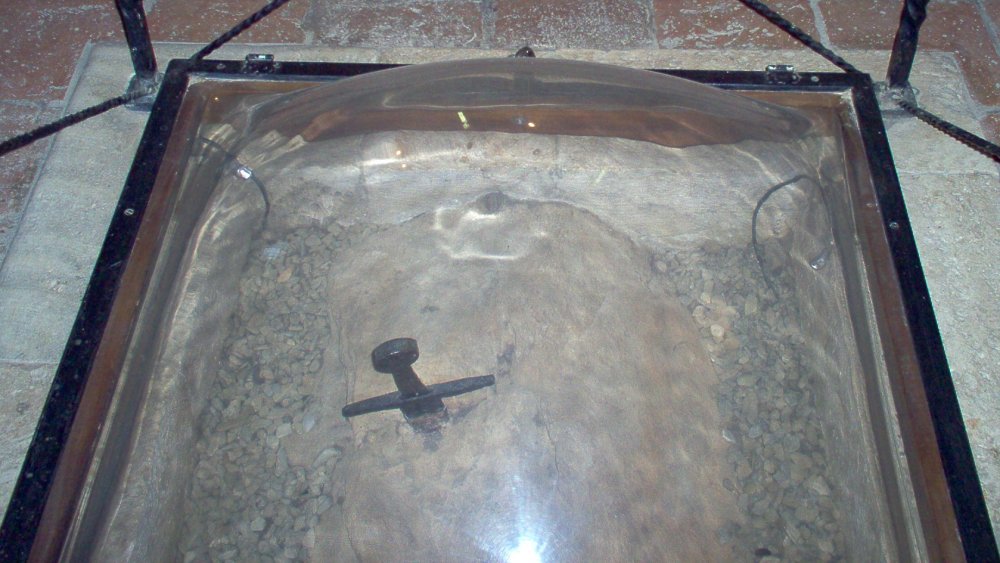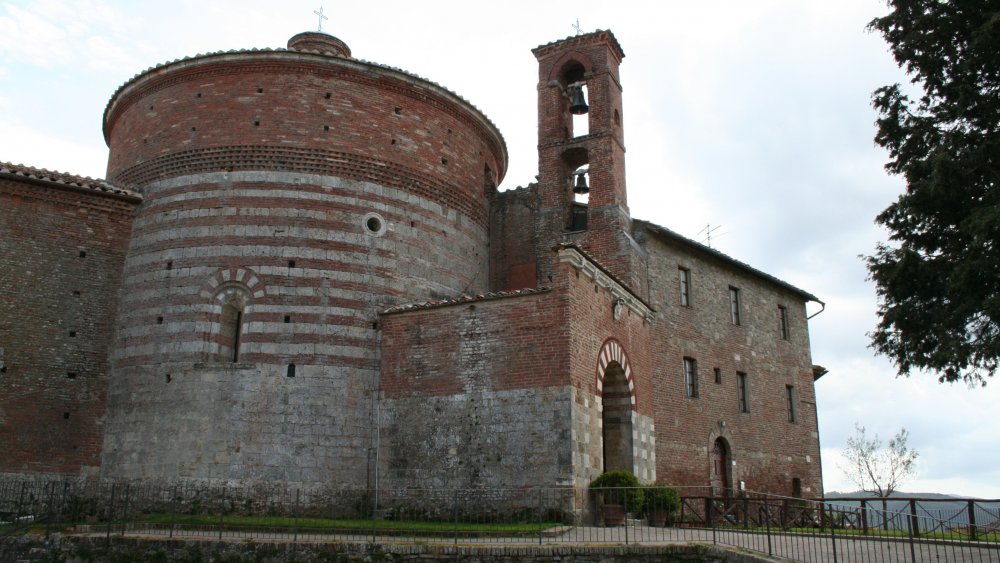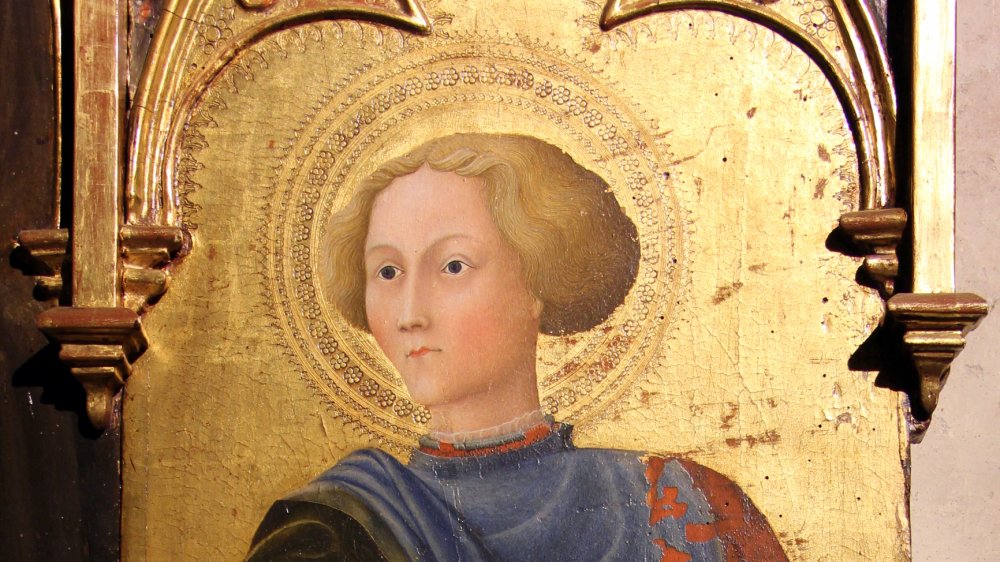Why The Sword In The Stone Remains An Enigma
"You can't expect to wield supreme executive power just 'cause some watery tart threw a sword at you!"
Yes, this very recognizable line from 1975's Monty Python and the Holy Grail encapsulates the ridiculousness of much of Arthurian legend. Excalibur, King Arthur's fabled sword, actually has two different origin stories, per Britannica: 1) It was given to him by the Lady of Lake, and chucked back into the lake by Arthur's knight Bedivere after Arthur was mortally wounded, and, 2) It was pulled out of a stone by boy Arthur, signaling his divine right to be king. The latter story comes from a written version of Arthurian stories in Le Morte Darthur by Sir Thomas Malory, written around 1470, also described in Britannica. According to Malory, Excalibur means "cut-steel." Clever.
The whole Excalibur legend, though, may have started with 12th century English historian Geoffrey Of Monmouth who, per Britannica, wrote Historia Regum Britanniae (History of the Kings of Britain). His book chronicled the life of King Arthur for the first time, and he seems to have based his account of Excalibur on the Irish tale of Caladbolg. According to The Sword Library, Caladbold was the famed two-handed greatsword of Fergus mac Roich, famously licentious King of Ulster. Caladbolg, it turns out, means "hard cleft" in Middle Welsh, and the sword was said to produce rainbows when swung. Uh-huh.
So what's the real story, here? And hang on ... there's an actual sword in a stone somewhere?
A 12th century sword and a pair of mummified hands
Yes, there really is an actual sword in a stone somewhere, and it may in fact be the sword in the stone from Arthurian legend.
In the verdant hills of Tuscany, about 30 kilometers southwest of Sienna, Italy, rests Monstesiepi Chapel, couched within the remains of an ancient abbey, as outlined on Aleteia. Pass through the walls of a medieval courtyard and down a spiral staircase, and there, under glass, is a boulder, from which juts the hilt and blade of a sword. As described on Quora, Luigi Garlaschelli of the University of Pavia used radar to determine that there is, in fact, a one- to two-meter-long blade buried within the stone, and possibly even a body beneath it. Until recently, the sword was believed to be a fake, but, as Atlas Obscura reports, recent studies indicate that the sword's construction is consistent with the late 1100s and early 1200s, shortly after Geoffrey of Monmouth died.
Did we mention that the sword is guarded by a pair of mummified hands? And that those hands carbon-date to the 12th century? Legend says that anyone who tries to lift the sword out of the stone will have their hands ripped off. It's not known who the hands belong to, but we do know who supposedly placed the sword in the stone (that's right: in the stone): Galgano Guidotti, declared a saint by Pope Lucius III in 1185, four years after Guidotti's death.
A tale of redemption and miracles
So now that we're starting to see some connections between stones and swords, let's compound the enigma further.
Galgano Guidotti was born in 1148 near Chiusdino, Italy, which is where the sword in the stone currently sits. He was from a wealthy family, a knight in his youth, and was apparently rather brutal and arrogant. After retiring from the knighthood, he tried his hand at following the teachings of Jesus and became a hermit. As the story goes, he had visions of the Archangel Michael, who told him to reform his old ways, including his "licentiousness" (possibly a connection to the Caladbolg tale). Galgano replied by saying, "It would be easier to cut a stone with this sword to do that," and proceeded to test the angel by taking his sword and ... whoosh! To his surprise, his sword slid right into a nearby stone. After Guidotti passed away, the chapel and rest of the structures were built around the supposedly miraculous artifact.
The life of Guidotti has been chronicled by academic Mario Moiraghi in his book L'enigma di san Galgano, which makes the case for the connection between Guidotti and Arthurian Excalibur stories. Moiraghi says, "The sword which, having being plunged into the stone becomes a cross; this is a true symbol of the Christian life — the transformation of violence into love." Final, conclusive answers regarding the sword in the stone, though, may remain forever elusive.


